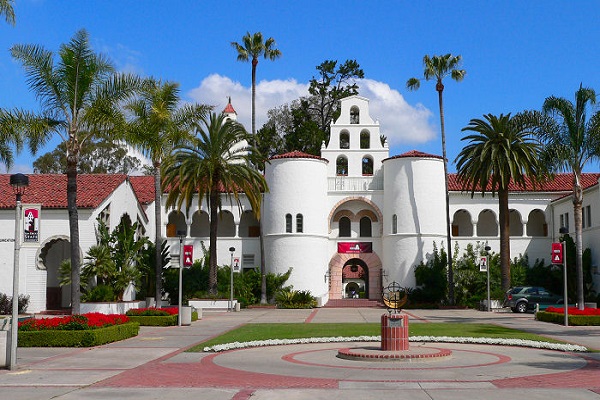San Diego State University: SDSU President Receives LEAD San Diego Visionary Award
Adela de la Torre earned her bachelor’s, master’s and doctorate degrees as a trained economist before rising through the professional ranks of higher education. After becoming president of San Diego State University in 2018, she introduced a five-year strategic plan for the university that includes strong commitments to research, innovation, and SDSU’s deep ties to the community.
On Sept. 14, her background and strategic vision were recognized by LEAD San Diego – the nonpartisan, leadership development arm of the San Diego Regional Chamber – with the 2022 LEAD San Diego Visionary Award for Innovation & Economic Opportunity.
According to LEAD San Diego, the annual Visionary Awards “celebrate innovative, collaborative, and change-making leadership that is making meaningful, long-lasting impacts on the people, neighborhoods, and industries of our bi-national region.”
Examples of innovation and regional economic development at SDSU are numerous. The university contributes more than $5.6 billion each year to the San Diego economy, while SDSU’s Division of Research & Innovation reported record-breaking research grants of $164.5 million in 2022. The Visionary Award nomination submitted for de la Torre, however, focused specifically on her role in championing the new SDSU Mission Valley.
The 132-acre site, only minutes from the existing San Diego campus, became available when the San Diego Chargers decided to relocate to Los Angeles. In November 2018, San Diegans voted for Ballot Measure G, authorizing the sale of the city-owned stadium property to SDSU. The university’s plans outlined in the measure included a 35,000-seat stadium; 80 acres of parks and open space, including a 34-acre river park for the San Diego community; and an Innovation District with up to 1.6 million square feet of campus, technology and commercial space.
The first shovels hit the ground in early 2020, beginning the demolition of the legacy stadium. The project moved quickly and in just over two years, the cutting-edge new Snapdragon Stadium opened Sept. 3. Development of the site’s parks and Innovation District are also under way.
During construction, SDSU Mission Valley is expected to create more than 20,000 new jobs and contribute an additional $4.6 billion per year to the local economy. Once completed, the ongoing impact to San Diego is estimated at $3 billion per year and 17,000 jobs.
Additional economic impact will come through training much of the region’s high-skill workforce. More than 60 percent of SDSU graduates remain in the San Diego region. SDSU Mission Valley’s capacity for up to 15,000 additional students addresses consistently growing interest from prospective students. The university received nearly 77,000 first-time student applications for its incoming class in 2022 and enrolled 6,500, breaking records in both metrics while also illustrating the need for added capacity.
The cutting-edge Innovation District also will enable expanded research activity in partnership with public agencies and leading private-sector businesses. A pillar of SDSU’s five-year strategic plan is to become one of the nation’s elite research universities.
In 2021, SDSU joined the top 7% of the nation’s degree-awarding doctoral institutions in research activity, according to the Carnegie Classification of Institutions of Higher Education. It is currently classified as “R2 – High research activity” and in 2022 set a CSU-system record with research grants in the arts, sciences and humanities totalling $164.5 million.
Creating the new Innovation District is an important step in the university’s goal of joining the top 3.3% in the elite “R1 – Very high research activity” category, bolstering the school’s academic standing and opening new pathways to additional external funding to benefit the entire university. For context, a recent announcement by University of California, Davis, said it has joined a group of nearly 20 public R1 universities in the U.S. that have exceeded $1 billion in annual research funding.
Encapsulating LEAD San Diego’s desired qualities in its Visionary Award winners, de la Torre summarized her long-term vision for innovation and economic opportunity at SDSU Mission Valley in a March 2022 article for the San Diego Union-Tribune.
“SDSU Mission Valley will expand our educational and research opportunities for an even broader group of San Diegans,” she said. “We will grow by 15,000 more students. With this comes major growth in faculty, research, industry partnerships and workforce impact. Mission Valley will create an innovation district for climate resilience and sustainability, cybersecurity and digital technology, media and entertainment, social justice, and health and education breakthroughs. We will create a sustainable community that will integrate our academic community with accessible housing, a world-class stadium, and a 34-acre river park further cementing our positive impact for another 125 years.”

